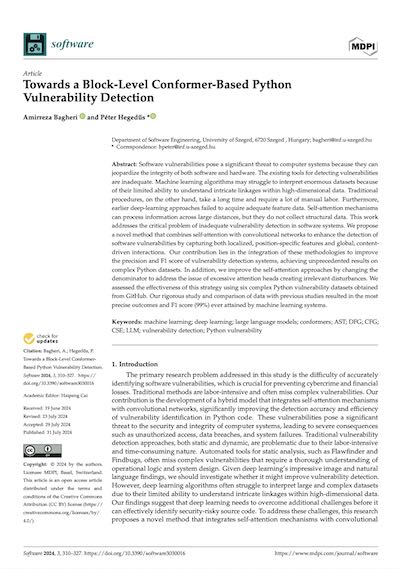Today's article comes from MDPI's Journal of Software. The authors are Bagheri et al., from the University of Szeged, in Hungary. This paper debuts a new method for detecting security-vulnerabilities in a Python codebase. According to the authors, their new approach attained the highest level of precision of any ML-based vulnerability-detector in history. Is their claim valid, or is it possible that their model was overfitted to the training data? Let's see.


You must be an active Journal Club member to access this content. If you're already a member, click the blue button to login. If you're not a member yet, click the sign-up button to get started.
Login to My Account
Sign Up